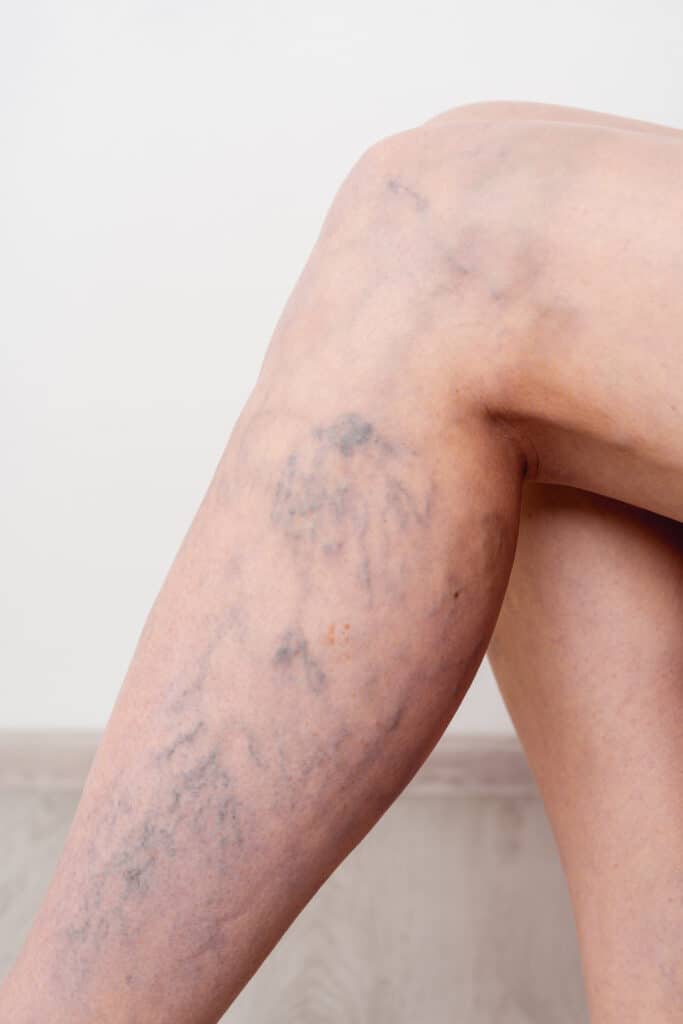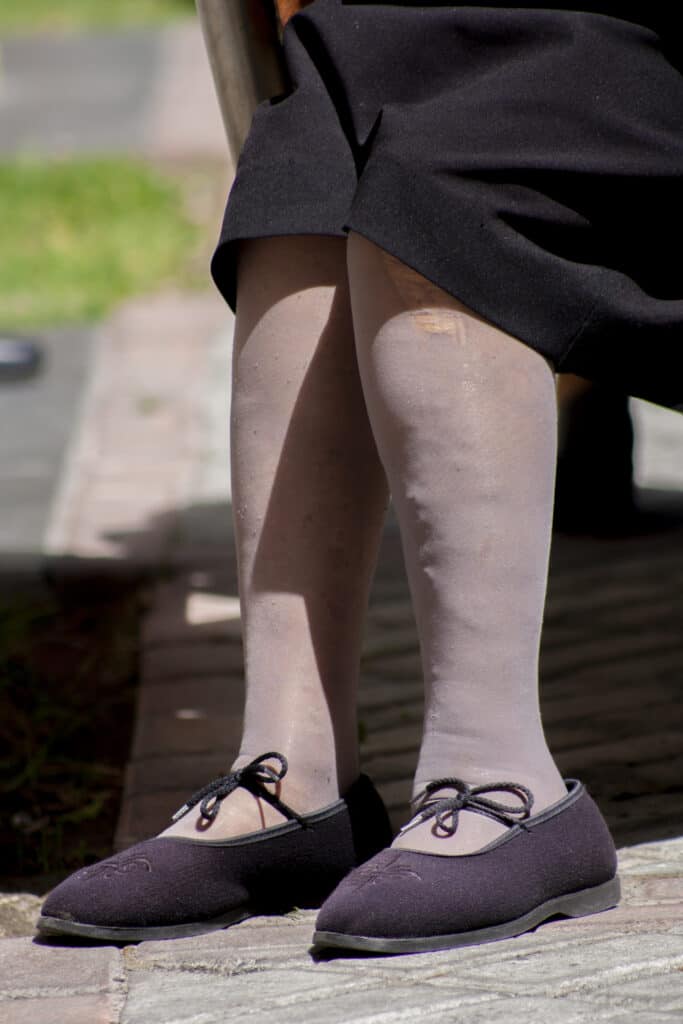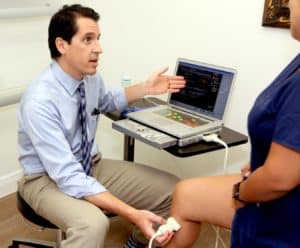Varicose veins are enlarged, twisted veins typically visible through the skin, most commonly in the legs and feet. But sometimes, varicose veins form in other parts of the body. While the condition isn’t typically dangerous, it can cause discomfort and should be monitored if you experience adverse symptoms.
Speaking of adverse symptoms, what exactly should you watch out for, and when is it appropriate to seek medical attention for varicose veins? Read on to find out.
Understanding Varicose Veins
Like most medical conditions, it’s essential to understand the root of the problem before seeking treatment. This section uncovers the definition and causes of varicose veins as well as the risk factors associated with the condition.

Definition and causes of varicose veins
Varicose veins are swollen, twisted veins that are visible through the skin. They usually occur in the legs and feet but can also form in other body parts. The condition may be caused by various factors, including but not limited to:
- Weakened valves in the vein walls that cause blood to pool and swell up
- Increase in blood pressure inside the veins due to obesity, overweight, pregnancy, etc.
- Older age
- Sitting or standing for long periods
Risk factors of varicose veins
Certain factors can increase your chances of developing varicose veins. These risk factors include:
- Family history of varicose veins
- Sedentary lifestyle
- Prolonged standing or sitting
- Being overweight or obese
- Aging
- Sex – women are more likely to develop the condition
Signs and Symptoms of Varicose Veins
How do you tell varicose veins apart from other medical conditions? Pay attention to the following signs and symptoms to determine whether it’s time to seek medical attention. But first, let’s explore the physical appearance and characteristics of varicose veins.
Physical appearances and characteristics of varicose veins
Varicose veins are often painless to spot. They typically appear as swollen, twisted veins visible through the skin. The veins may be blue or purple and can be raised above the skin’s surface. In some cases, varicose veins may cause pain or discomfort.
Common symptoms experienced by individuals with varicose veins
Per the National Institute of Health, if you experience any of the following signs or symptoms, it’s time to consult your healthcare provider:
- Swelling in your legs or ankles
- Pain, aching, or burning in the affected area
- Skin discoloration around the varicose veins
- Nighttime leg cramps
- Bulging, bluish vein(s)
- Heavy feeling in the affected area
Potential Complications of Varicose Veins
If left alone for long, varicose veins can lead to complications or life-altering health risks. Here’s a closer look:
Overview of possible complications
Some of the most common complications include:
- Venous ulcers – open sores that form near the ankles due to increased pressure in the veins
- Venous thrombosis – the formation of blood clots in the veins
- Superficial thrombophlebitis – inflammation of the veins caused by a blood clot
Health risks associated with untreated varicose veins
If left untreated, varicose veins can lead to various secondary health complications, including:
- Chronic venous insufficiency, CVI. This is a serious condition where the valves in your leg veins are weakened and unable to send blood back to your heart properly. CVI can cause pain, swelling, skin discoloration, and even life-threatening blood clots.
- Skin damage. Varicose veins can lead to skin discoloration, dryness, and itching. The condition can sometimes lead to severe skin infections or even open sores (ulcers).
- Stroke. When varicose veins block a major blood vessel, it can cause a stroke.
Identifying Dangerous Varicose Veins
Ideally, most varicose veins can be treated with simple lifestyle changes and basic home remedies. However, some are incredibly life-threatening and warrant immediate medical attention.
Red flags to watch out for
If you experience any of the following, you no longer have the luxury to sit and wait for the symptoms to disappear naturally:
- Sudden, sharp pain in your leg
- Swelling or redness around the vein
- Bleeding from varicose veins
- Persistent discomfort and tenderness
- Worsening signs and symptoms despite home treatment
When to seek medical attention
If you’re experiencing any of the symptoms described above, it’s time to seek medical attention. Your healthcare provider can evaluate the severity of your condition and recommend an appropriate course of treatment. But as the National Institute of Health warns, call 9-1-1 immediately if you see any bleeding from varicose veins, as this is a medical emergency!
Diagnosis and Treatment Options
The good news is that several diagnoses and treatment options are available for varicose veins. Your healthcare provider can determine the best course of action based on the severity of your condition.
Medical evaluation and diagnostic procedures
The first step in diagnosing varicose veins is to have a physical exam. Here’s what to expect:
- Your healthcare provider will check for signs of swelling, discoloration, and tenderness.
- They will also ask about your lifestyle, family history, activity levels, and symptoms.
- They may also order an ultrasound or other imaging tests to get a better look at your veins.
Treatment options for varicose veins
Once the diagnosis is confirmed, your healthcare provider can recommend an appropriate course of treatment. Common treatment options include:
- Compression stockings – These special stockings compress your legs and help improve circulation.
- Sclerotherapy – a procedure that involves injecting a solution into varicose veins to close them off and redirect blood flow to healthy veins.
- Surgery – Sometimes, your healthcare provider may recommend surgery to remove the varicose veins. This is usually done on an outpatient basis with relatively little post-operative discomfort.
- Endovenous ablation – Using laser or radiofrequency energy, this procedure seals off the varicose vein, improving circulation and reducing discomfort.

Prevention and Lifestyle Tips
You don’t have to wait for varicose veins to appear before taking preventive measures. Discover the top strategies to prevent varicose veins from worsening and lifestyle modifications to reduce the risk of developing the condition in the first place:
Strategies to prevent varicose veins from worsening
- Keep your legs elevated when sitting or lying down.
- Exercise regularly to help improve circulation.
- Avoid standing for prolonged periods. Take frequent breaks and move around as much as possible.
- Wear loose, comfortable clothing and shoes that don’t restrict circulation.
Lifestyle modifications to reduce the risk of developing varicose veins
- Eat a healthy, balanced diet.
- Maintain a healthy weight.
- Avoid wearing high-heeled shoes.
- Avoid tight clothing or socks that constrict circulation.
- Stay hydrated to keep your veins elastic and flexible.
- Take regular breaks from sitting or standing for long periods.
In addition to the strategies and lifestyle modifications mentioned above, you can do a few things to relieve any discomfort caused by varicose veins. For instance, apply cold compresses or soak your legs in a warm bath with Epsom salts. Massaging your legs can also help improve circulation and reduce inflammation.
Conclusion
Varicose veins are a common condition that can range from mild to life-threatening. If left unmonitored or untreated, they can lead to serious health complications like deep vein thrombosis and leg ulcers. That’s why it’s crucial to seek medical attention if you are experiencing any of the symptoms described above. With the proper diagnosis and treatment plan, you can reduce your risk of developing complications and improve your overall quality of life.
At East Bay Vein Specialists, our team of experienced vein doctors offers advanced treatments for varicose veins, including endovenous ablation and sclerotherapy. We aim to help you get the best care possible with minimal downtime, so you can return to your activities as soon as possible. Contact us today to learn more about our services or to schedule an appointment.
Sources:


